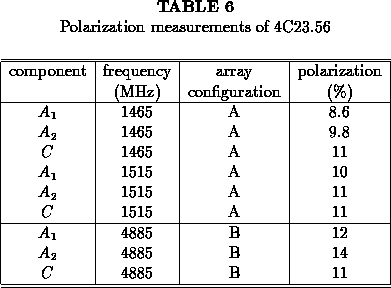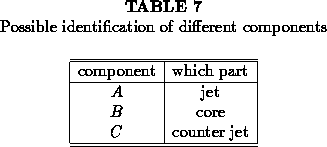At all wavelengths (except 90 cm) you can see the core and two radio lobes. The
source is asymmetric in size but not in flux. Both lobes are polarized (11-14
%). The left one appeared to have two different regions, because the
polarization vectors were almost perpendicular in these area's. When a contour
plot of the polarization intensity was made it gave us a clue why there where
two different angles for the polarization vectors. You can see clearly that
there are two distinct peaks in the polarization intensity map. In each region
the angle of polarization is different. There is not much difference in the
strength of polarization between these area's (8.6 %for and 9.8
%for
).
The magnetic field also shows two different angles, but now you see this
phenomenon also in the other lobe. The rotation measure is for both lobes
roughly the same. It is about . The spectral indices are
pretty steep for both lobes and fairly flat for the core. At higher frequencies
all parts get steeper indices and even the core becomes very steep. The left
lobe has a huge spectral index of
.


